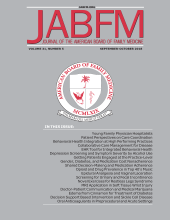Abstract
Objective: To determine how frequently patients with advanced imaging for back or abdominal pain achieve outcomes that are identified by patients as important and whether those achieving those outcomes are more satisfied.
Methods: Cross-sectional analysis of survey responses from patients of an 800-physician multi-specialty group in Minnesota in 2013. A total of 201 patients with abdominal pain and 167 patients with back pain 1 year earlier that was serious enough for a computed tomography or magnetic resonance imaging scan (67% of those contacted). The main outcomes were the frequency of occurrence of 19 outcomes previously identified by patients as important, plus satisfaction with the results of care.
Results: The majority of patients surveyed had achieved most of the desired outcomes. For abdominal pain, 17 of 19 of the desired outcomes were achieved by >50% of patients, while 11 of 19 desired outcomes were achieved by >50% of patients with back pain. Seven of the desired outcomes were significantly associated with satisfaction.
Conclusion: Achieving outcomes important to patients is associated with greater patient satisfaction. Such measures are potentially valuable measures of quality.







